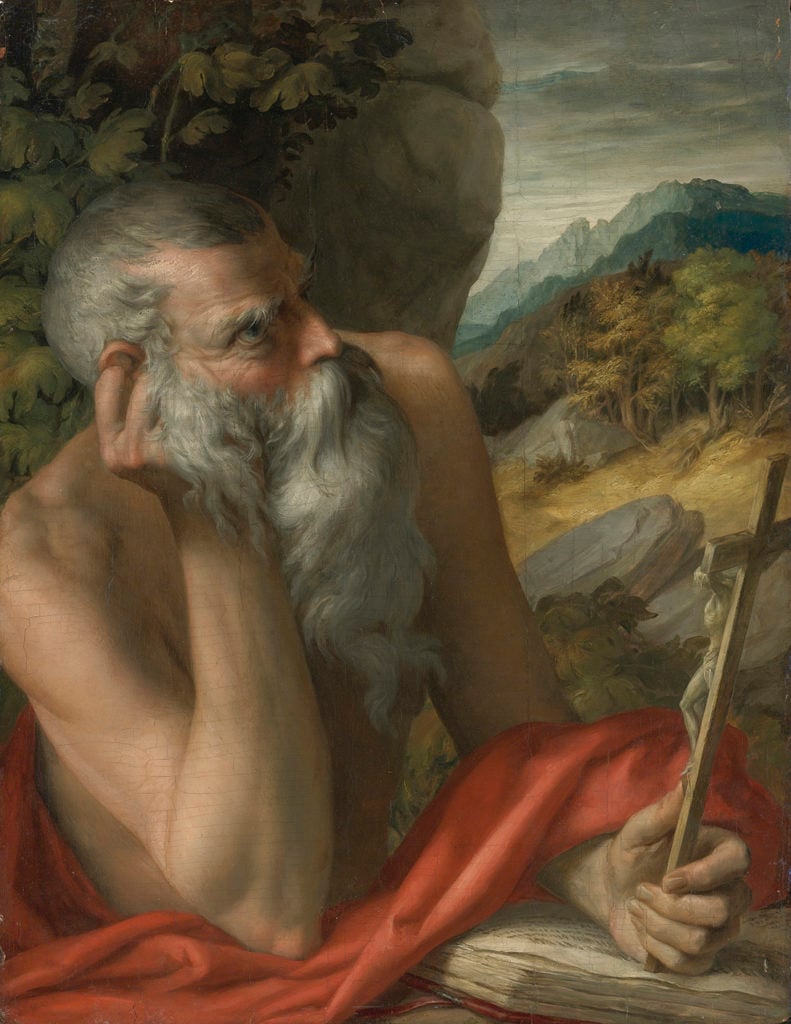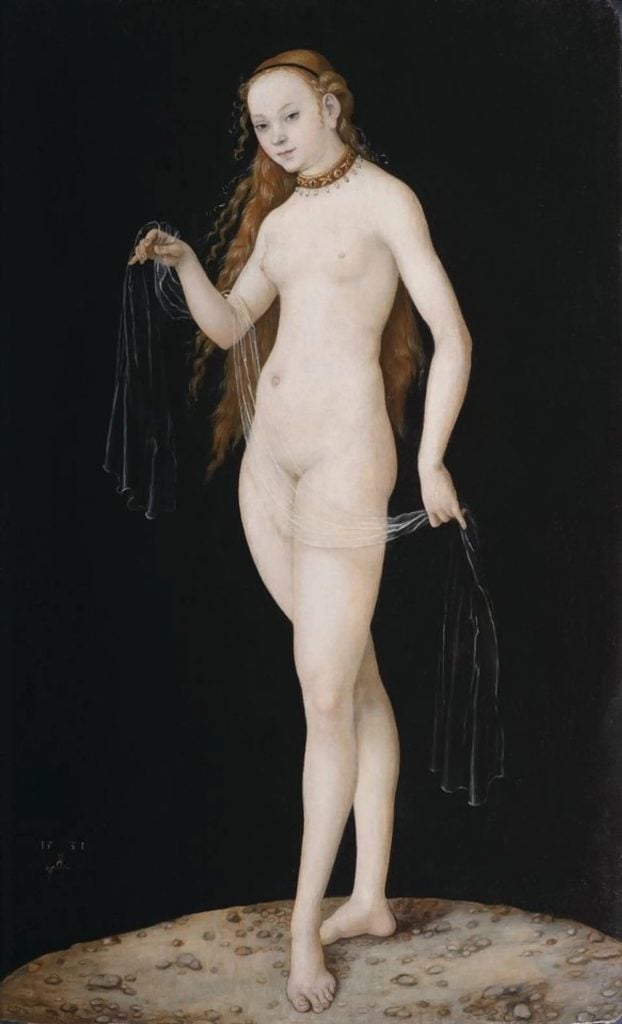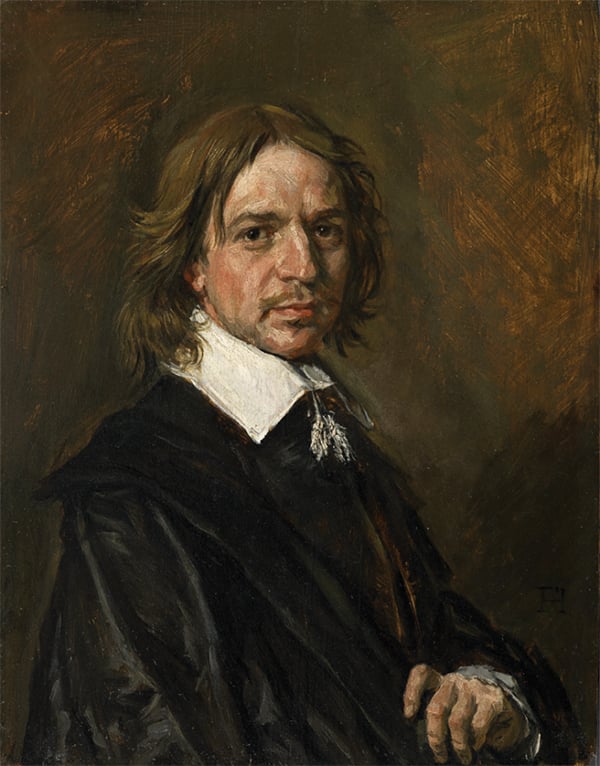Law & Politics
Collector Who Sold a Fake Old Master Through Sotheby’s Must Repay the Auction House $1.2 Million, Court Rules
It's the latest legal development in an ongoing forgery scandal.

It's the latest legal development in an ongoing forgery scandal.

Sarah Cascone

We all know the phrase “buyer beware,” but a new ruling out of New York suggests that sellers ought to be just as wary. The seller of a work purportedly by the Italian painter Parmigianino, which later was revealed to be fake, must repay Sotheby’s $1.2 million, a US district court in New York has ruled.
The decision, first reported by the Art Newspaper, is the latest development in an ongoing Old Master forgery scandal centering on French art collector Giuliano Ruffini, who owned works attributed to a number of Old Masters that are now under investigation. Before it was revealed to be fake, the painting of Saint Jerome at the center of this case was shown at the Metropolitan Museum of Art as a Parmigianino and at the Kunsthistoriches Museum in Vienna.
Judge George B. Daniels ruled that the defendant, seller Lionel de Saint Donat-Pourrieres, was in breach of contract based on the consignment agreement. He must repay the auction house the amount of the original sale, $842,500, plus $158,089.93 in interest at the rate of nine percent, as well as the $13,100 bill from Orion and $214,617.74 in attorney’s fees. (When Sotheby’s determined the painting was a fake, it issued a refund to the buyer.)
The painting was originally sold at the auction house in January 2012, but did not fall under suspicion until March 2016, when French authorities raided an exhibition of the collection of the Prince of Liechtenstein at the Caumont Centre d’Art in Aix, seizing another work, Lucas Cranach the Elder’s Venus, as a potential forgery.
Like the Cranach and several other now-suspect works, the so-called Parmigianino had come to market through Ruffini. This inauspicious connection led Sotheby’s to take a second look at the work. James Martin’s company Orion Analytical (now part of Sotheby’s) conducted a technical analysis of the painting and found evidence of synthetic materials that would not have existed in Parmigianino’s time. In other words, it was a modern fake.

Lucas Cranach the Elder, Venus (1531). The painting is now believed to be a fake. ©Liechtenstein. The Princely Collections, Vaduz–Vienna.
“We’re grateful that the Court held Mr. Pourrieres liable for selling a painting revealed to be a fake,” Sotheby’s lawyer, Paul Cossu of of New York’s Cahill, Cossu, Noh & Robinson, told artnet News in an email. “While fakes rarely get through a major auction house, it’s also good to see that, when one does, and the auction house does the right thing and meets its obligations to a buyer, the justice system will hold the wrongdoer responsible.”
The ruling came down after de Saint Donat-Pourrieres’s lawyers withdrew from the case at the end of February following the completion of a second expert report commissioned by the defendant, who had maintained the work was an authentic Old Master.
Although the report cited different problems with the panel painting than those identified by Orion, Italian expert Maurizio Seracini ultimately agreed that the work was “without doubt a 20th-century fabrication.” After the delivery of this damning opinion, de Saint Donat-Pourrieres, who had ceased paying his attorneys, did not retain new counsel and declined to represent himself, leading the judge to make his decision in Sotheby’s favor.

Franz Hals, Portrait of a Man, one of a series of Old Master works sold by a French dealer that authorities now believe may be forgeries. Courtesy of Sotheby’s.
As of press time, de Saint Donat-Pourrieres—who did not appear in court for the ruling, according to The Art Newspaper—did not respond to artnet News’s request for comment.
Like the St. Jerome, other paintings implicated by their connection to Ruffini were widely accepted by experts as authentic, fooling auction houses and world-class museums alike. Sotheby’s also sold a supposed Frans Hals from Ruffini in 2011 as part of a private sale. It refunded the buyer to the tune of $10 million after testing by Orion proved the work was a fake. The auction house is now suing the gallery that bought the painting from Ruffini to recover its losses. The case is scheduled to go to trial in London in April of next year.